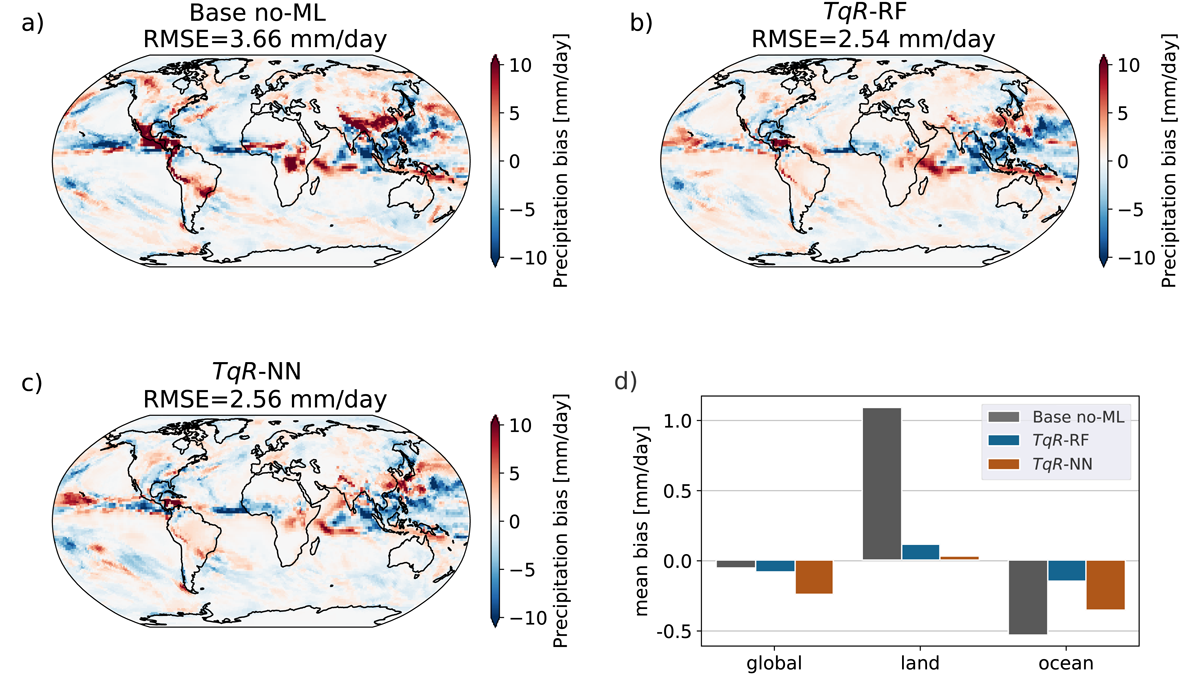Editors’ Highlights are summaries of recent papers by AGU’s journal editors.
Source: Journal of Advances in Modeling Earth Systems
A new generation of global atmospheric models with 1 to 5 kilometer grid spacing can accurately simulate extreme weather, such as the local heavy rain from thunderstorm systems and flow across complex mountain ranges. They could also help us better plan for local-scale impacts of future climate change, but they are far too computation-heavy to use for simulations of decades or centuries. Bretherton et al. [2022] present a machine learning approach to correcting the coarser-grid climate models that we can afford to run using outputs from short reference simulations with fine-grid climate models. The correction makes the coarse-grid model more closely track weather forecasts and time-mean rainfall patterns from the reference simulation.
Citation: Bretherton, C. S., Henn, B., Kwa, A., Brenowitz, N. D., Watt-Meyer, O., McGibbon, J., et al. (2022). Correcting coarse-grid weather and climate models by machine learning from global storm-resolving simulations. Journal of Advances in Modeling Earth Systems, 14, e2021MS002794. https://doi.org/10.1029/2021MS002794
―Jiwen Fan, Editor, JAMES

